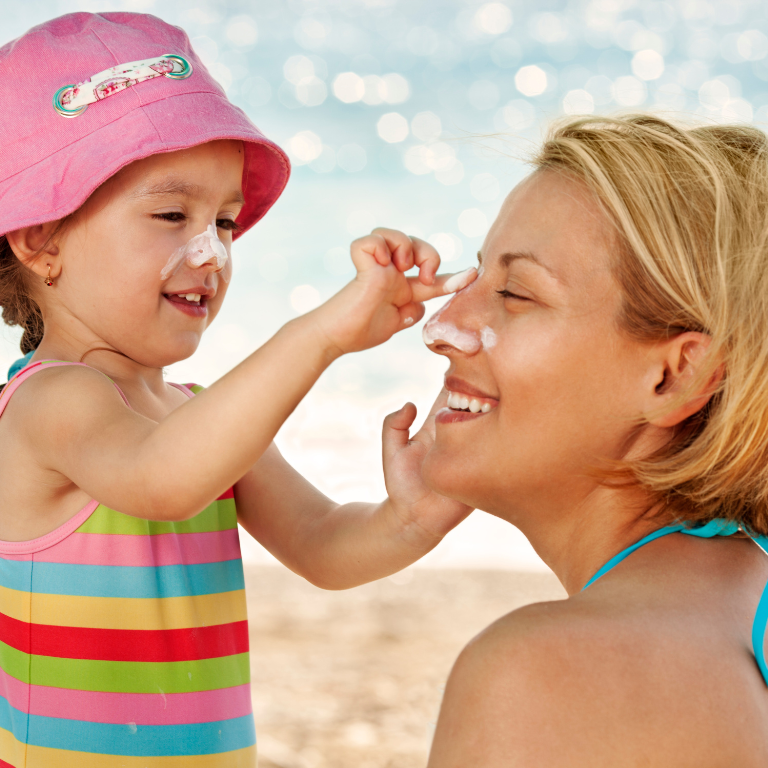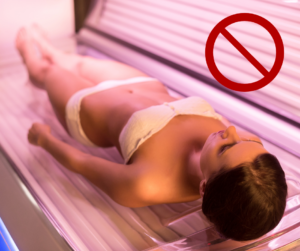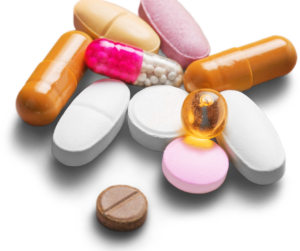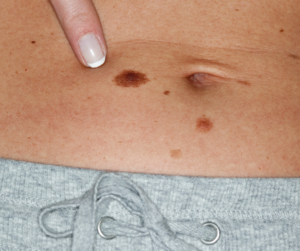
“Sun-Proof Your Skin: The Ultimate Guide to Protecting Your Body’s Largest Organ”
“The importance of sun protection and the best ways to protect your skin from the sun’s harmful rays”
Exposure to the sun’s harmful rays can lead to various skin problems, including sunburn, premature aging, and skin cancer. Protecting your skin from the sun’s UV radiation is essential to maintain healthy skin.
Here are some ways to protect your skin from the sun’s harmful rays:

Use sunscreen: A sunscreen is a crucial tool for protecting your skin from harmful UV radiation, which can cause various types of skin damage, such as sunburn, premature aging, and an increased risk of skin cancer.
Broad-spectrum sunscreens protect against both UVA and UVB rays, as both types of radiation can cause skin damage. UVA rays penetrate deeper into the skin and can cause long-term damage, while UVB rays are responsible for sunburn and immediate harm.
An SPF of at least 30 is recommended, as it blocks around 97% of UVB rays. However, it’s important to note that SPF only measures protection against UVB rays, so it’s still important to look for broad-spectrum protection to ensure protection against UVA rays as well.
When applying sunscreen, make sure to cover all exposed areas of your skin, including your face, neck, arms, and legs. Don’t forget your ears, hands, and feet, as these areas are often overlooked but can still be damaged by the sun.
It’s essential to reapply sunscreen every two hours, especially if you’re swimming or sweating, as water and sweat can wash away sunscreen, leaving your skin unprotected. You should also reapply sunscreen after toweling off or spending extended periods in the sun, even if you haven’t been swimming or sweating.
By using sunscreen properly and regularly, you can help protect your skin from the damaging effects of the sun and maintain healthy skin for years to come.

Wear protective clothing: Wearing protective clothing is another crucial step in protecting your skin from the harmful effects of the sun. Clothing can act as an effective barrier between your skin and the sun’s UV radiation, reducing the amount of exposed skin and lowering the risk of damage.
Loose, long-sleeved shirts, pants, hats, and sunglasses are all great options for sun protection. Clothing that covers as much skin as possible is ideal, especially during peak sunlight hours when the sun’s rays are most intense. Long sleeves and pants not only protect your arms and legs from the sun, but they also help to keep you cooler, as they block direct sunlight from reaching your skin.
When selecting clothing for sun protection, it’s essential to look for items made of tightly woven fabrics, as they offer better protection than loosely woven fabrics. Tightly woven fabrics are less permeable to UV radiation, reducing the amount of UV that can penetrate through to your skin.
Hats and sunglasses are also essential items for protecting your face and eyes from the sun’s harmful rays. Look for hats with a wide brim that provides shade for your face, neck, and ears. Sunglasses with UV-blocking lenses can protect your eyes from UV radiation, reducing the risk of cataracts and other eye problems.
Overall, wearing protective clothing can help to reduce your risk of skin damage and skin cancer caused by UV radiation. It’s an easy and effective way to protect your skin and maintain healthy skin for years to come.

Seek shade: Seeking shade is another important strategy for protecting your skin from the sun’s harmful rays. The sun’s rays are strongest between 10 a.m. and 4 p.m., so seeking shade during these hours is crucial when possible.
If you’re spending time outdoors during peak sunlight hours, try to find a shady area where you can take a break from the sun. Look for natural shade from trees, or use an umbrella, canopy, or other shelter to create your shade.
It’s important to note that shade doesn’t provide complete protection from the sun’s rays. UV radiation can still penetrate through tree leaves and some types of fabric, so it’s still essential to wear protective clothing and sunscreen even when you’re in the shade.
Seeking shade is especially important for children, as their skin is more sensitive to the sun’s rays and more susceptible to damage. Infants under six months of age should be kept out of direct sunlight altogether, as their skin is too sensitive for sunscreen.
By seeking shade during peak sunlight hours, you can help reduce your risk of skin damage and skin cancer caused by UV radiation. It’s a simple yet effective strategy that can help you enjoy the outdoors safely while maintaining healthy skin for years to come.

Avoid tanning beds: Avoiding tanning beds is essential for maintaining healthy skin and reducing the risk of skin damage and skin cancer. Tanning beds emit UV radiation that can penetrate deep into your skin and cause damage to your skin cells. Exposure to UV radiation from tanning beds can lead to premature aging, wrinkles, sunburn, and an increased risk of skin cancer.
If you want a tanned look, consider using self-tanners or spray tans instead. Self-tanners are a safe alternative to tanning beds and do not require exposure to harmful UV radiation. They contain a chemical called dihydroxyacetone (DHA), which reacts with the amino acids in the outer layer of your skin to produce a tan-like appearance.
Spray tans are another safe option for achieving a tanned look without exposing your skin to UV radiation. They involve spraying a fine mist of self-tanner onto your skin, providing an even, natural-looking tan that lasts several days.
It’s important to note that self-tanners and spray tans do not provide any protection from the sun’s harmful UV radiation. You should still wear protective clothing and use sunscreen when spending time outdoors to reduce your risk of skin damage and skin cancer.
In summary, avoiding tanning beds is crucial for maintaining healthy skin and reducing the risk of skin damage and skin cancer. Instead, consider using self-tanners or spray tans as a safe alternative to achieve a tanned look without the harmful effects of UV radiation.

Be aware of medications that increase sun sensitivity: Being aware of medications that increase sun sensitivity is an important step in protecting your skin from the harmful effects of the sun. Some medications can make your skin more sensitive to UV radiation, increasing the risk of sunburn, skin damage, and even skin cancer.
Examples of medications that can increase sun sensitivity include antibiotics like tetracycline, anti-inflammatories like ibuprofen, and acne medications like isotretinoin. Other types of medications like antihistamines, diuretics, and some types of chemotherapy drugs can also increase sun sensitivity.
If you’re taking a medication and you’re not sure if it increases sun sensitivity, it’s important to consult with your doctor or pharmacist. They can provide guidance on how to protect your skin while taking the medication, such as wearing protective clothing and using sunscreen.
In some cases, it may be necessary to avoid direct sunlight altogether while taking a medication that increases sun sensitivity. If you’re experiencing any skin reactions or symptoms like redness, itching, or blistering while taking a medication, be sure to notify your doctor immediately.
In summary, being aware of medications that increase sun sensitivity is crucial for protecting your skin from the harmful effects of UV radiation. Consult with your doctor or pharmacist if you’re unsure if your medication increases sun sensitivity, and take steps to protect your skin while taking the medication, such as wearing protective clothing and using sunscreen.

Check your skin regularly: Regularly checking your skin for any changes is an important step in detecting skin cancer early, when it’s most treatable. Skin cancer is the most common type of cancer, and exposure to UV radiation from the sun is a major risk factor.
- To check your skin:
- Look for changes in the size, shape, and color of moles, freckles, and spots.
- Pay attention to any new or unusual growths, as well as any changes to existing moles or spots.
- Use a mirror to check hard-to-see areas like your back and scalp, and ask a partner or friend to help you check.
Suppose you notice any changes in your skin, such as a new mole or a change in the size, shape, or color of an existing mole. In that case, it’s important to consult with your doctor or a dermatologist. They can examine the mole and determine if it’s cancerous or if it needs to be removed.
It’s important to remember that sun protection is essential year-round, not just during the summer months. Even on cloudy days, UV rays can penetrate the clouds and cause skin damage. Incorporating sun protection tips into your daily routine, such as wearing protective clothing, using sunscreen, and seeking shade during peak sun hours, can help reduce your risk of skin damage and skin cancer.
In summary, regularly checking your skin for changes is crucial in detecting skin cancer early, when it’s most treatable. Pay attention to changes in the size, shape, and color of moles, freckles, and spots.
In conclusion, protecting your skin from the sun’s harmful rays is essential for maintaining healthy skin and reducing the risk of skin damage and skin cancer. By following these sun protection tips, including wearing sunscreen, protective clothing, seeking shade, avoiding tanning beds, being aware of medications that increase sun sensitivity, and checking your skin regularly for any changes, you can significantly reduce your risk of skin damage and skin cancer. Remember to make sun protection a year-round habit, as even on cloudy days, UV rays can penetrate the clouds and cause skin damage. By incorporating these simple steps into your daily routine, you can enjoy the outdoors while keeping your skin healthy and protected.
I hope you liked this blog, remember to like, share & subscribe!
“If you’re dealing with skin conditions, it’s crucial to use non-toxic and natural body wash. That’s why I’ve developed Naturo Essentials body and hair wash, which is specifically formulated to be gentle on your skin while providing optimal nourishment and cleansing. Our wash is completely free of any nasty chemicals, fragrance, and colour, making it a safe and natural choice for your skin.”
Available on Amazon Australia.
If you’re currently facing the challenges of a chronic skin issue, please don’t lose hope. I’m thrilled to let you know that there’s a holistic approach to treatment that can make a significant difference in your skin’s health.
As a skincare specialist, I’ve developed customized Holistic skin programs that are tailored to help your skin heal from inside out. By taking the first step and booking a consultation with me, you can start your journey towards natural healing and a brighter future for your skin.
Let’s work together to achieve healthy, glowing skin that you deserve.
Email me on contact@holisticskinwellness.com if you wish to know how Can I help you!
